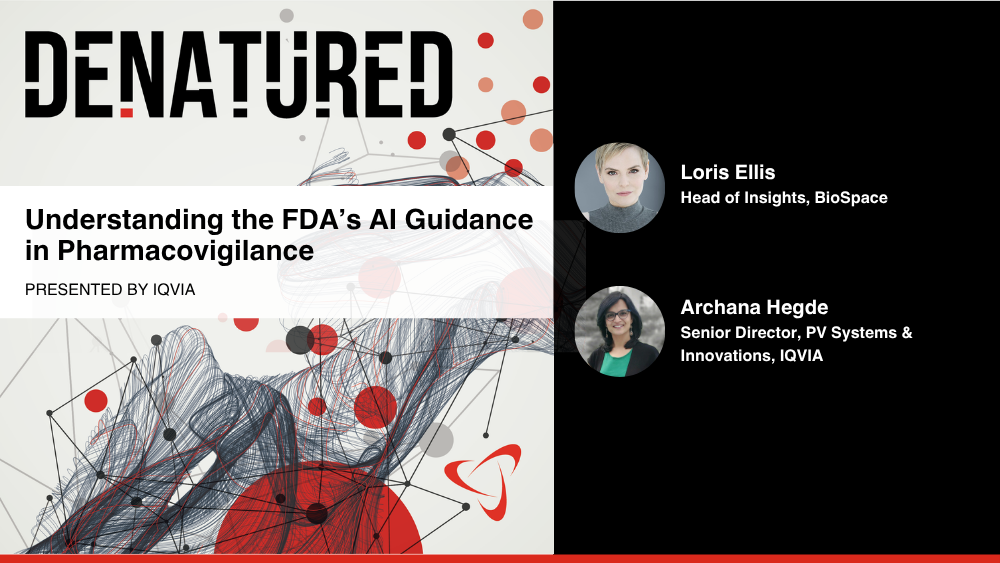The data was recently presented at the 2018 ASCO-SITC Clinical Immuno-Oncology Symposium.
Data was Presented at 2018 ASCO-SITC Clinical Immuno-Oncology Symposium
NEW YORK , Feb. 05, 2018 (GLOBE NEWSWIRE) -- BeyondSpring Inc. (NASDAQ:BYSI), a global clinical-stage biopharmaceutical company focused on the development of transforming immuno-oncology cancer therapies, today summarized the KOL call with Dr. Douglas Blayney, a long-standing clinical researcher and founding member of the NCCN neutropenia management guideline panel, which took place on Jan. 29, 2018. The call discussed BeyondSpring’s lead asset, Plinabulin, in the prevention of docetaxel chemotherapy-induced neutropenia (CIN). The data was recently presented at the 2018 ASCO-SITC Clinical Immuno-Oncology Symposium.
In the Phase 2 portion of BeyondSpring’s global Phase 2/3 clinical trial (Study 105), Plinabulin, when dosed once, 30 minutes after docetaxel, was shown to prevent CIN and met its primary objectives, which were to establish the recommended Phase 3 dose (RP3D):
- RP3D was determined to be 20 mg/m2 based on a clear dose response in Grade 4 neutropenia incidence and the duration of severe neutropenia (DSN), wherein the 20 mg/m2 had the best results, which were very similar to those of Neulasta, and based on a favorable overall safety profile with the 20 mg/m2 Plinabulin dose.
The trial had a pre-specified non-inferiority margin of 0.65 days, as agreed upon with the U.S. FDA, for DSN to show non-inferiority in neutropenia prevention for Plinabulin versus Neulasta. In the Phase 2 study, the 13 patients who were treated with Plinabulin at 20 mg/m2 had 0.38 days of DSN, as compared to 0.14 days with Neulasta (14 patients), representing a difference of 0.24 days, well within the pre-defined non-inferiority margin of 0.65 days.
Without neutropenia prophylaxis, DSN is well over one day, and a reduction of DSN to 0.38 days with Plinabulin is clinically meaningful and would be sufficient to meet the primary objective of demonstrating non-inferiority versus Neulasta in Phase 3. Thus, if the Phase 3 portion of Study 105 would confirm these results (DSN of 0.38 days), Study 105 would be regarded as a positive trial for NDA submission purposes.
BeyondSpring attributes the observed difference between Plinabulin’s 0.38 DSN and Neulasta’s 0.14 DSN to the small sample size in the Phase 2 portion of the study. For reference, in the completed Phase 2 study (163 patients of which n=90 on Plinabulin) and in the ongoing Phase 3 study of Plinabulin in treating non-small cell lung cancer (NSCLC), which has recruited approximately 200 patients to date (of which ~n=100 patients on Plinabulin), BeyondSpring has seen Grade 4 frequency for Plinabulin in less than 5 percent of patients.
However, in the Phase 2 portion of Study 105 (with a sample size of n=13 on the 20 mg/m2 Plinabulin dose), the Grade 4 neutropenia frequency is 15 percent (two cases out of 13 patients). Since the Phase 3 portion of Study 105 is planned to have n=75 patients in the 20 mg/m2 Plinabulin arm, BeyondSpring anticipates a lower DSN in the Phase 3 portion of Study 105, given its larger sample size. The incidence of Grade 4 neutropenia was 14 percent with Neulasta (two of 14 patients), which was in line with the expected Grade 4 neutropenia frequency with Neulasta.
“For patients treated with docetaxel without neutropenia prophylaxis, DSN is well over one day, which increases their risk of febrile neutropenia and other life-threatening complications,” said Dr. Blayney. “Plinabulin, as dosed in Study 105, produced DSN well below one day, which provides clinical benefit and predicts that febrile neutropenia would be reduced in these patients. The DSN below one day is clinically meaningful, as accepted for Neulasta; if confirmed in the pivotal Phase 3 portion of the study, it will also be clinically meaningful for Plinabulin. Plinabulin’s differentiation – based on its same-day administration, lesser bone pain and probable anti-cancer effects seen during the clinical program – represents a compelling target product profile that I believe would represent an attractive alternative to the current standard of care. Additionally, once approved, Plinabulin could be quickly considered for inclusion in the NCCN guidelines.”
Dr. Blayney continued, “This unique profile should position the drug to compete with Neulasta and also bring patients onto therapy who have declined G-CSFs due to the side effects, such as bone pain. Once both the protection against myelosuppression and potential anti-tumor efficacy become more apparent, Plinabulin could spur an expansion of the market. Plinabulin has the future potential to be prescribed as prevalently as anti-emetic drugs: when high- and intermediate-risk chemotherapy is used, anti-emetic drugs are routinely used in parallel.”
“Study 105 was designed to show Plinabulin’s non-inferiority to Neulasta, as docetaxel chemotherapy regimens, which are relatively mild for the intermediate-risk segment for febrile neutropenia, do not cause very long DSN,” added Dr. Ramon Mohanlal, BeyondSpring’s Chief Medical Officer. “In contrast, in BeyondSpring’s Study 106, which uses the aggressive chemotherapy combination of TAC (Taxotere/adriamycin/cyclophosphamide) and targets the high-risk segment for febrile neutropenia, we anticipate a much longer DSN at baseline and have designed the study to establish superiority to Neulasta on the primary measure of DSN. In addition, as a small molecule, Plinabulin can be offered with significant flexibility in pricing, which the Company believes would generate a high level of interest among payers, if approved.”
“With the differentiated profile of Plinabulin from G-CSF, even with only non-inferiority for DSN, primary research conducted by IQVIA (IMS & Quintiles) among 10 U.S. insurance companies and 110 U.S. physicians who prescribe G-CSFs regularly show that physicians would give 20 to 25 percent of the G-CSF market to Plinabulin,” concluded Dr. Lan Huang, co-founder and CEO of BeyondSpring. “With G-CSF annual sales at $6 billion a year in the U.S., we believe that this could represent a $1 billion market potential in the U.S. alone. G-CSF is only recommended for high-risk chemotherapy, per NCCN guidelines, which is around 20 percent of the chemotherapy market. As Dr. Blayney pointed out, Plinabulin has the further potential to be used in intermediate-risk chemotherapy, which is around 60 percent of the chemotherapy market. With Studies 105 and 106 enrolling smoothly, we plan to file for a NDA in the U.S. for CIN in 2019. With the recent regulatory changes with the China FDA, we have the distinct opportunity to file for a NDA in China as early as 2018. Having received China’s 13th five-year grant late last year, Plinabulin is included in China’s ‘National Priority Drug List’ and has potential access to the national insurance program, with an outreach of 4 million new cancer patients yearly in China.”
Plinabulin is a non-G-CSF agent that prevents CIN through a mechanism different from G-CSF by sustaining neutrophil levels within the normal range via reversal of the block of neutrophil formation in the bone marrow induced by docetaxel. Plinabulin had been shown to prevent neutropenia caused by a number of chemotherapeutics with different anti-tumor mechanisms in preclinical studies.
About BeyondSpring
BeyondSpring is a global clinical stage biopharmaceutical company developing innovative immuno-oncology cancer therapies with a robust pipeline from internal development and from collaboration with University of Washington in de novo drug discovery using ubiquitination platform. BeyondSpring’s lead asset, Plinabulin, is in a Phase 3 clinical trial as a direct anticancer agent in non-small cell lung cancer (Study 103) and two Phase 2/3 clinical programs in the prevention of chemotherapy-induced neutropenia (CIN) – Studies 105 and 106. BeyondSpring has a seasoned management team with many years of experience bringing drugs to market.
About Plinabulin
Studies on Plinabulin's mechanism of action indicate that Plinabulin activates GEF-H1, a guanine nucleotide exchange factor. GEF-H1 activates downstream transduction pathways leading to the activation of the protein c-Jun. Activated c-Jun enters the nucleus of dendritic cells to upregulate immune-related genes, which contributes to the up-regulation of a series of genes leading to dendritic cell maturation, T-cell activation and other effects that prevent neutropenia. To reduce CIN, Plinabulin is given as a single IV infusion in each cycle, 30 minutes to 1 hour after completion of the chemotherapy, offering same day dosing, whereas G-CSF is given 24 hours after chemotherapy. In addition, the use of Plinabulin is not associated with bone pain, which is a frequent side effect with G-CSF.
Cautionary Note Regarding Forward-Looking Statements
This press release includes forward-looking statements that are not historical facts. Words such as "will," "expect," "anticipate," "plan," "believe," "design," "may," "future," "estimate," "predict," "objective," "goal," or variations thereof and variations of such words and similar expressions are intended to identify such forward-looking statements. Forward-looking statements are based on BeyondSpring's current knowledge and its present beliefs and expectations regarding possible future events and are subject to risks, uncertainties and assumptions. Actual results and the timing of events could differ materially from those anticipated in these forward-looking statements as a result of several factors including, but not limited to, the anticipated amount needed to finance the company's future operations, unexpected results of clinical trials, delays or denial in regulatory approval process, our expectations regarding the potential safety, efficacy or clinical utility of our product candidates, or additional competition in the market. The forward-looking statements made herein speak only as of the date of this release and BeyondSpring undertakes no obligation to update publicly such forward-looking statements to reflect subsequent events or circumstances, except as otherwise required by law.
Investor Relations:
Steve Silver / Jeffrey Goldberger
KCSA Strategic Communications
212-682-6300
ssilver@kcsa.com / jgoldberger@kcsa.com
Media Relations:
Caitlin Kasunich / Amy Singh
KCSA Strategic Communications
212.896.1241 / 212.896.1207
ckasunich@kcsa.com / asingh@kcsa.com




